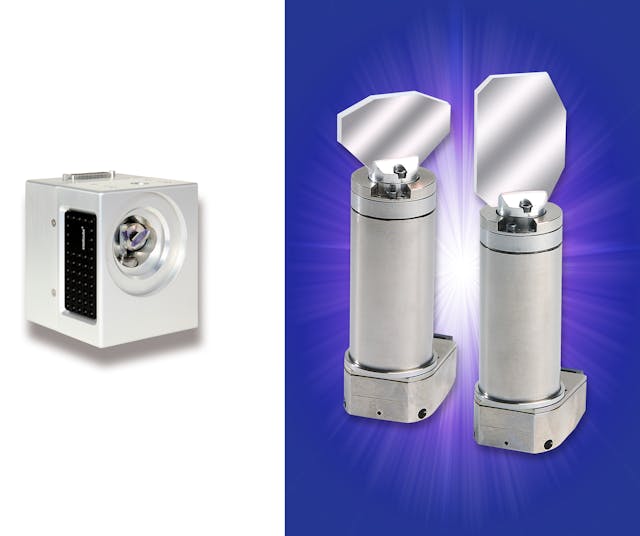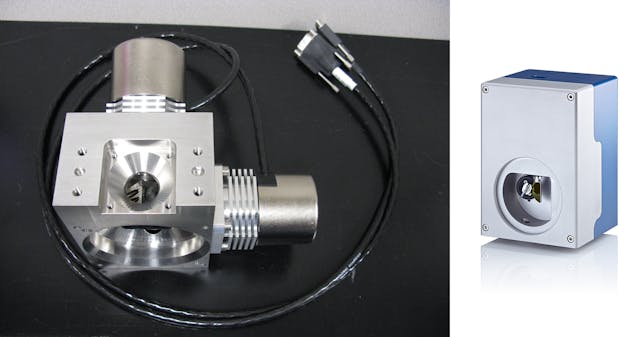The Relevance of Calibration in Maximizing Your Galvanometer Scanner's Efficiency
The Relevance of Calibration in Maximizing Your Galvanometer Scanner's Efficiency
Blog Article
Trick Applications of a Galvanometer Scanner in Various Scientific Study Area
Galvanometer scanners have become essential to various scientific study fields, supplying improved precision in applications ranging from biomedical imaging to environmental tracking. Their ability to facilitate high-resolution imaging strategies, such as confocal microscopy, plays an important duty ahead of time our understanding of mobile frameworks. In material processing, these devices improve the accuracy of laser cutting and welding. As we check out the diverse applications of galvanometer scanners, it comes to be evident that their effect prolongs much beyond mere technological capabilities, increasing inquiries regarding their future possibility in arising research areas.
Biomedical Imaging

In confocal microscopy, galvanometer scanners help with the purchase of photos with boosted resolution and comparison, permitting scientists to visualize mobile parts in vivo. The ability to swiftly capture several focal airplanes improves the three-dimensional repair of tissues, offering critical insights into their design and function.

Moreover, the quick scanning abilities of galvanometer systems add to developments in vibrant imaging applications, such as keeping track of cellular feedbacks to stimuli. Galvanometer scanners are important tools in the field of biomedical imaging, progressing research study and medical diagnostics via their precision and effectiveness.
Material Processing
Precision in material processing is vital for accomplishing high-grade lead to various commercial applications (galvanometer scanner). Galvanometer scanners play a vital function in improving this accuracy by enabling rapid and precise movement control during the processing of materials such as steels, polymers, and porcelains. These devices promote strategies like laser cutting, welding, and engraving, which need finely-tuned modifications to ensure optimum results
In laser cutting, for circumstances, galvanometer scanners permit complex designs to be executed with high fidelity, minimizing waste and improving production efficiency. The rapid activity capabilities enable fast changes in the laser beam path, which is necessary for maintaining constant cutting top quality across varying material thicknesses. In laser welding applications, the precision supplied by galvanometer scanners ensures strong joints with very little thermal distortion, thereby improving structural integrity.
Moreover, the flexibility of galvanometer scanners to various laser kinds and wavelengths even more widens their energy in product handling. Their ability to work in tandem with sophisticated software program for real-time monitoring and control includes an additional layer of class, allowing producers to attain precise requirements customized to particular applications. Hence, galvanometer scanners are indispensable in progressing the capacities of product handling technologies.
Optical Characterization
In the realm of optical characterization, the role of galvanometer scanners ends up being progressively substantial as they facilitate the evaluation of various optical buildings with high accuracy. These devices allow specific control of laser light beams, allowing scientists to systematically probe materials at multiple angles and frequencies. This capacity is essential for defining the refractive index, absorption coefficient, and spreading properties of diverse materials.
Galvanometer scanners are particularly effective in techniques such as optical comprehensibility tomography (OCT) and laser-induced fluorescence (LIF), where rapid scanning is vital. By achieving high-speed inflection of the laser placement, galvanometer scanners boost the temporal resolution of these approaches, leading to boosted imaging and analysis. In addition, they make it possible for the exploration of complex interactions in between light and issue, which is crucial for recognizing product habits under different conditions.
In addition, the assimilation of galvanometer scanners with spectroscopic methods expands their energy, permitting thorough spectral evaluation across a wide variety of wavelengths. This convenience makes them crucial tools in areas such as materials science, biomedical research, and nanotechnology, where in-depth optical characterization is extremely important for progressing knowledge and development.

Laser Micromachining
The introduction of laser micromachining has transformed making procedures, making it possible for the production of detailed structures with unparalleled accuracy. This strategy makes use of high-intensity laser beam of lights to specifically eliminate material from a substrate, making it possible to fabricate micro-scale elements that are essential in various markets. The application of galvanometer scanners in laser micromachining boosts the efficiency and precision of this process by allowing rapid and precise beam positioning.
Galvanometer scanners promote the dynamic control of laser beams, allowing complicated patterns to be engraved or cut with high fidelity. Their fast feedback times and high-resolution capacities permit the control of laser pulses, which is necessary for achieving the preferred product properties and surface coatings. This innovation is especially helpful in industries such as electronics, where the miniaturization of parts is important for performance improvement.
Moreover, laser micromachining is progressively being utilized in the clinical field for producing precision tools and implants. The combination of laser innovation and galvanometer scanning not just improves manufacturing process however likewise lowers waste this hyperlink and improves total product utilization, making it a lasting option for modern-day production challenges.
Ecological Surveillance
Ecological monitoring has ended up being significantly crucial in evaluating and taking care of the health and wellness of environments and metropolitan settings. The integration of galvanometer scanners in this area allows precise, fast, and reliable data collection, promoting better decision-making processes. These scanners are adept at guiding laser beam of lights or sensors across various terrains, enabling high-resolution mapping of environmental criteria such as air top quality, dirt composition, and water air pollution.
In air top quality monitoring, galvanometer scanners can be employed to analyze particulate matter and aeriform toxins, offering real-time data that notifies public health and wellness campaigns. For water high quality evaluations, these scanners can assist in identifying pollutants and measuring physical specifications, consequently ensuring compliance with ecological guidelines. Moreover, in remote sensing applications, galvanometer scanners boost the ability of satellite and drone systems to capture in-depth photos and information of large locations, identifying anthropogenic impacts and ecological adjustments.
The adaptability and precision of galvanometer scanners make them essential tools in ecological surveillance, adding substantially to sustainable advancement efforts and the protection of all-natural resources. As the requirement for efficient environmental administration grows, the duty of these innovative devices will most certainly expand better.
Conclusion
In recap, galvanometer scanners work as important devices throughout several scientific research domains. Their application in biomedical imaging improves the precision of techniques crucial for cellular visualization and diagnostics. In material handling, these scanners help with sophisticated laser cutting read here and welding processes, making sure very little distortion. Furthermore, their duty in ecological surveillance underscores the relevance of precise information collection in resolving public wellness and environmental obstacles. The adaptability and performance of galvanometer scanners proceed to drive innovations in these crucial areas.
In laser welding applications, the precision supplied by galvanometer scanners makes certain strong joints with marginal thermal distortion, therefore boosting structural integrity.
Moreover, the versatility of galvanometer scanners to different laser types and wavelengths further widens their utility in product processing. By accomplishing high-speed inflection of the laser position, galvanometer scanners enhance the temporal resolution of these methods, leading to enhanced imaging and evaluation. The application of galvanometer scanners in laser micromachining enhances the effectiveness and Visit Website precision of this process by permitting quick and accurate beam of light positioning.
Galvanometer scanners assist in the vibrant control of laser light beams, enabling complicated patterns to be etched or cut with high integrity.
Report this page